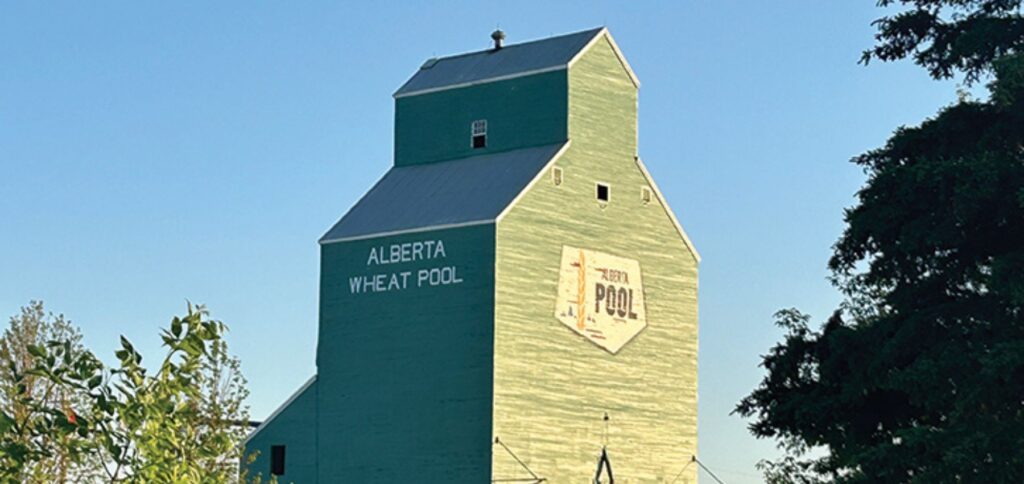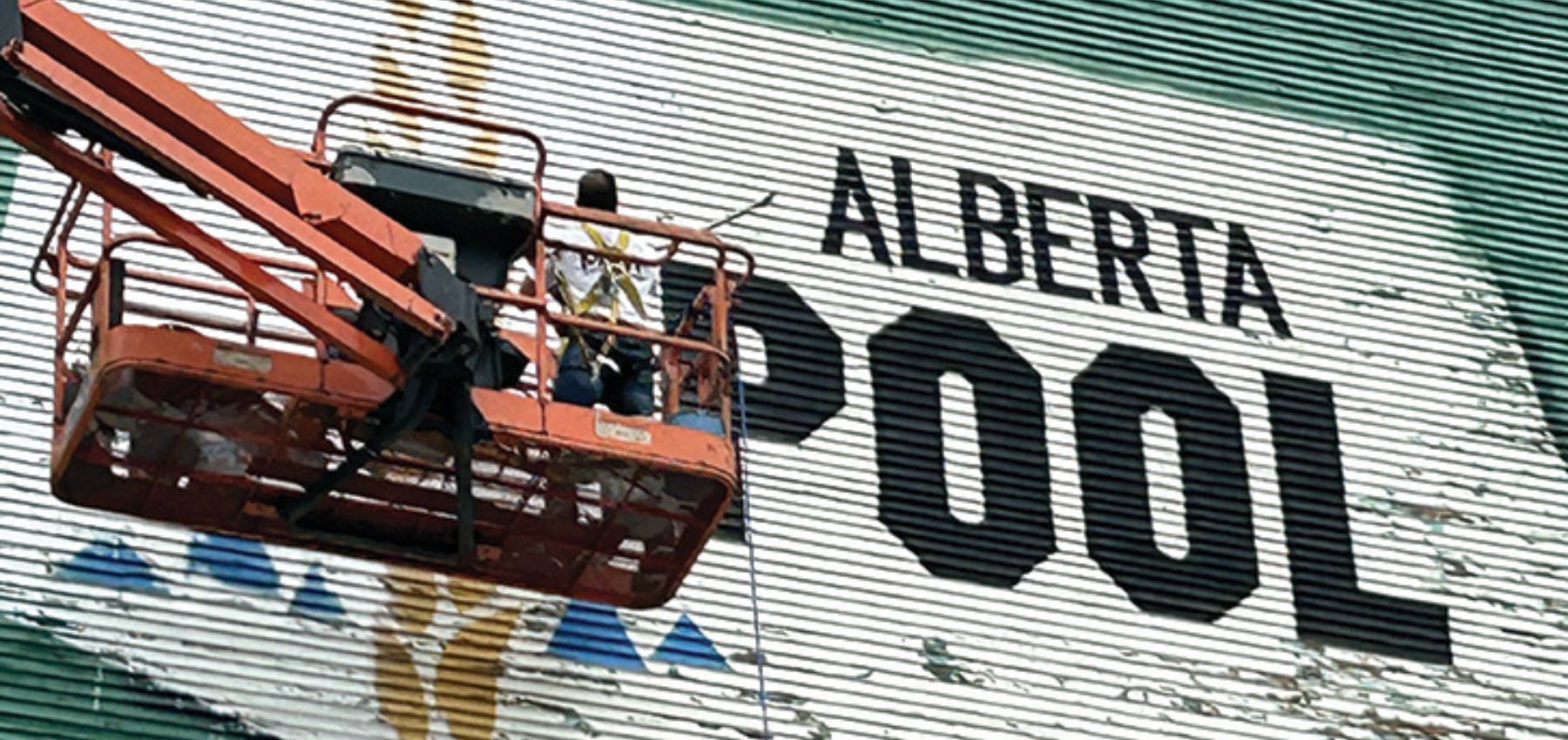Stories Blog / Community Stories / Thrive Magazine
Elevating Alberta’s prairie past
Spruce Grove and District Agricultural Society celebrates and protects the region’s history.

A proud reminder of the region’s agricultural heritage, the Spruce Grove Grain Elevator has stood tall over the prairie community since 1958. It was once an important centre of commerce for the region, bustling with activity during the harvest season and spurring development of businesses and transportation lines in the area. “Spruce Grove was really started because of the elevator,” explains Sharon Acheson, a volunteer with the Spruce Grove and District Agricultural Society. “People started to come there to deliver their grain, and then businesses built up around there, and that’s really how Spruce Grove started was all the business that started to collect from grain elevators.” But like many historic grain elevators in the province, the elevator is no longer used for its original purpose.
In 1995, it ceased operations as a traditional grain elevator, and was slated to be demolished. That’s when the Spruce Grove and District Agricultural Society stepped in to purchase the building for one dollar from the Alberta Wheat Pool. A few years later, they purchased the land surrounding the building from CN for $35,000. “The organization thought at the time that it would be a good place to preserve local agricultural history,” says Acheson. In 2020, the Government of Alberta designated the site as a provincial historic resource, in recognition of its role in Alberta’s past. “Over the years the Ag Society has maintained it, repainting about every five years just to preserve the wooden siding,” Acheson says, adding that repairs to the elevator were primarily done by volunteers. Over time however, the effects of weather on the building began to be more noticeable and the Ag Society requested an assessment by Alberta Historic Resources in 2023.

That assessment found they needed to replace some of the siding, the roof needed fixing and the windows needed extensive repairs. Those repairs would require them to replicate the original windows using the same glass and putty to preserve the historic integrity of the elevator. But this wasn’t the biggest issue. “When we actually got into examining the elevator really closely, we found out that the foundation of the building — the concrete foundation — was crumbling. So it ended up being a very big project.” With costs for the project estimated to run over $150,000, the volunteer-run society faced a difficult reality. The elevator, which had stood watch over Spruce Grove for more than half a century, was at risk. But volunteers like Acheson were determined to protect the historic building. “Grain elevators were all over the prairies at one time, and they’re falling down, they’re burning, there just aren’t that many left” she says, adding that she estimates there are around 100 remaining across the province.
“I really feel like we need to protect the ones that are left. It represents our agricultural history here.”
Thanks in part to a $50,000 Community Grant from Edmonton Community Foundation (ECF), along with a provincial grant for aging facilities, the Ag Society raised the necessary funds to repair the building’s foundation, paint the wooden structure and begin repairs to the windows. “We believe that a community’s health and identity are deeply rooted in its connection to the past,” says Melisa Zapisocky, ECF’s Grants Associate. “Projects like the preservation of the Spruce Grove Grain Elevator don’t just protect historic structures — they safeguard the stories, values and experiences that shape who we are.” Today, the bold green elevator continues to stand proud as the heart of the Spruce Grove and District Historic Agricultural Grounds, and is open to the public during the society’s office hours. Tours of the elevator, which is still in its original working condition, are provided from April to October. “It’s in very good, original shape inside, and it’s beautiful,” says Acheson.
Looking back over the restoration project, as well as the fundraising process, Acheson can hardly believe what the society has been able to accomplish within just a short few years. “At first, the thought of managing all that work was overwhelming, but once we started to see some grants and funding coming in, we realized we could actually do it,” she says.
“It’s quite wonderful to think that when you work together and get other people involved that you can accomplish things like that.”
This story comes from the Summer 2025 Edition of Thrive Magazine.
Read the full issue.